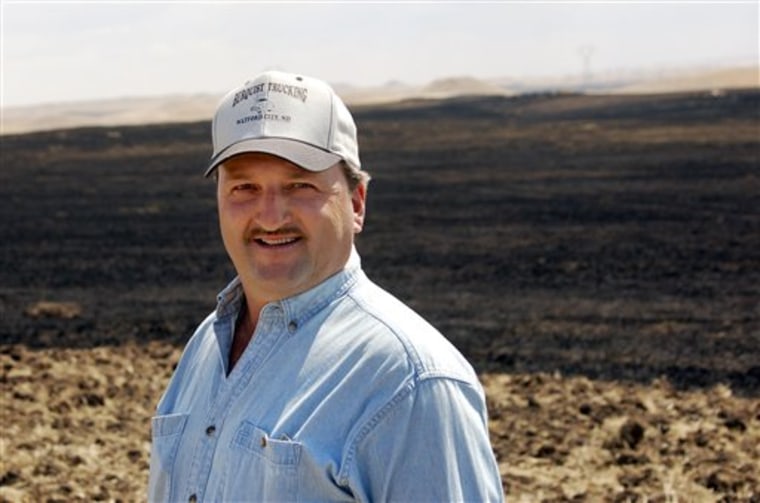A portion of Ernie Roehrich's farm hasn't been plowed for two decades: It's part of a federal program that pays landowners to idle land for conservation.
Payments from the Conservation Reserve Program have helped during lean times. And wildlife — especially pheasants — have flourished on his century-old family farm in south central North Dakota.
But lured by high commodity prices, Roehrich and thousands like him nationwide are opting out of the program — and even paying penalties to exit early.
"I'm all for conservation," Roehrich said. "But the market is the market — farmers are businessmen, too."
The decision on whether to allow more land to be taken out of the nation's biggest private-lands management program is dividing consumers, farmers, hunters and conservationists. It could put millions of acres now used by ducks, deer or pheasants into crop production.
Some worry the long-term price is too high. Others welcome the switch, saying it could hold down food prices.
Elizabeth Schulz, of Bismarck, said her grocery bill has increased by more than $200 a month, and she'd like to see more dormant crop land seeded this spring.
"Milk, gas — everything is going up and it seems like it's going up every day," said Schulz, a mother of two. "I think they should use that CRP to plant more food. The more land to plant means there would be more food and the prices would go down."
Penalty-free releases possible
U.S. Agriculture Secretary Ed Schafer, a former North Dakota governor, said he plans to make a decision in August or September on whether to allow "penalty-free release of land" for the 2009 crop year.
"While he did say 'no' to this year, he didn't say 'hell no,' to next year," said Bill Roenigk, the chief economist at the National Chicken Council.
Roenigk also is chairman of Alliance for Agriculture Growth and Competitiveness, a group representing beef, poultry, pork, grain and feed industries, that has been lobbying the Agriculture Department since 2005 to allow landowners to pull out of CRP contracts without penalty.
"We need all the land we can get and yields as good as we can get to meet all the needs," Roenigk said. "No one envisioned we'd max out crop land in our lifetime, and nobody ever envisioned ethanol taking off like it did."
CRP, which started in 1985, dolled out about $1.9 billion to landowners last year, said John Johnson, deputy administrator for farm programs for the Agriculture Department's Farm Service Agency. It pays a nationwide average of about $50 per acre annually.
In mid-April, there were 34.6 million acres enrolled in CRP, down about 2 million from a year ago, Johnson said. Contracts on another 1 million acres are set to expire this year, he said. The program currently is authorized at 39.2 million acres, or about 10 percent of U.S. crop land.
Scott McLeod, a biologist for the conservation group Ducks Unlimited based in Bismarck, likens the exodus from the program to a jailbreak.
"I do not blame farmers or producers one bit — they're running a business," McLeod said. "These guys do want to do conservation, but they want to be paid for it."
Activist: Biggest loser is wildlife
McLeod said the biggest loser in the loss of CRP land will be wildlife. "This isn't just about hunters — this is an issue for everybody. Wildlife is a barometer for our environment," he said.
Johnson, of the federal Farm Service Agency, estimated about 130,000 acres that were under contract were taken out of the program this year, for which farmers will have to reimburse the government.
Terry Steinwand, director of North Dakota's Game and Fish Department, said the CRP has improved water and air quality and controlled soil erosion. It also produced habitat that led to record deer and pheasant numbers in the state, he said.
"The benefits of CRP is a no-brainer," Steinwand said. "Anything that comes off of it is not good."
Roehrich had just renewed his contract on 200 acres of CRP last year but decided to farm it instead, to take advantage of soaring crop prices. He faces a fine of about $1,500 for taking the land out of the program, though he's asked for the penalty to be waived.
He thinks it's worth the risk.
"There is potential there to make good money, if we get rain and the hail stays away," he said.
